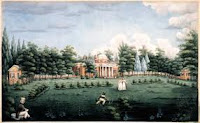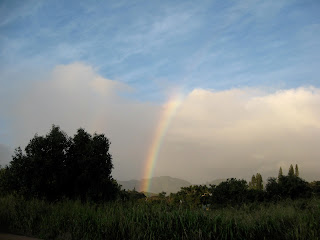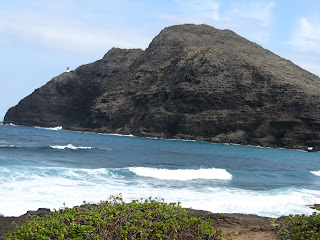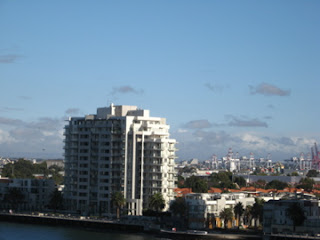 |
| Museo Anahuacalli, Mexico City |
A Home For My Idols
The second dream, one of thirty-five years’ standing, was renewed by the destruction wreaked everywhere by the war. It was to build a home for my anthropological collection, which I had started to assemble on my first return to Mexico in 1910.
So while the bombs menaced our very lives and made painting seem a thing of insignificance, Frida and I started a strange kind of ranch. Here we planned to raise our own food staples, milk, honey, and vegetables, while we prepared to build our museum. In the first few weeks, we erected a stable for our animals. [Really? Can you see Frida or Diego actually wielding hammers themselves? Perhaps they hired workers, ummmm?]
The side we chose was near Coyoacán, right on top of a lava bed. Cactus sprang up profusely from the crevices in the stones. Nature had landscaped the area as if for one purpose, and I decided that our house should be in harmony with her work. Accordingly, we cut our stone from the basalt indigenous to the region. The structure would rise from the earth like an extension of its natural surface.
I designed the building in a composite of Aztec, Mayan, and “Rivera Traditional” styles. The squarely built exterior resembles an ancient Mexican pyramid of the pre-Cortes period.
 |
| Mask of Thaloc © BritishMuseum.org |
The main floor is the museum where my sculptures of this period are displayed. The rooms here wind and open into each other like those of a labyrinth. Walled in unfaced stone, they are gray and dank. On the ceilings are white stone mosaics, mainly abstract in form. One of the mosaics, however, is of the rain god, Tlaloc, whose face I represented as a formation of two wriggling snakes.
The upper section is still to be completed. I intended it as my studio, where I could create my own sculptures to adorn the outside walls. But lack of time and money have so far prevented me from carrying out this part of my plan.
Surmounting all is a tower representing the god of air and open on all sides to the raw, cool drafts of mountain air. The cool and stony aspect of the place gives one the impression of being in an underground temple.
During the war, this building was “home” for Frida and me. After the war, it was converted exclusively into a home for my idols. Guided by Dr. Alfonso Caso, Mexico’s leading anthropologist, I passed many wonderful hours placing my statues in chronological order in the different rooms of the building. Dr. Caso and his associates were enthusiastic about my collection, declaring that while my dating of some pieces might be in error, I had shown an uncanny instinct for what was authentic and important. They rated the collection among the best in the world.
This venture, however, has almost impoverished me. The cost of maintaining the museum has been about $125 a week. With this outlay added to the $300 a month I gave Frida for household expenses for our home in Coyoacán and the forty dollars a month I paid for my daughter Ruth’s college tuition, I was left with hardly enough change to buy the daily newspaper.
People are under the impression that I am wealthy because I have sometimes paid as much as $250 for a single idol. But when I have made such a purchase, I have often, as a result, had to scrimp on necessities. Frida used to scold me sometimes for not keeping enough money to buy such prosaic things as underwear. But my idols have more than compensated me for their expense. Whenever I feel disgusted with some painting I have done, I have only to look at them and suddenly I feel good again.
By now, I have already spent more than fifty thousand dollars on the museum and still it is not complete. Most visitors are astonished to hear this low figure. However, I did so much myself: the architectural designs, the engineering, and even the overseeing of the actual work, thus cutting the cost of construction considerably.
Since beginning the project, I have put into it literally every penny I have earned above modest living expenses. Work on the museum halted during Frida’s illnesses, when the heavy medical and hospital bills virtually bankrupted me. However, when Frida was well and earning money from her own paintings, she would refuse to accept any money from me, and I would go on idol-buying sprees. All in all I have spent about one hundred thousand dollars on my collection – apart from the building itself.
I calculate that another forty thousand dollars will be required to complete the building. My plan is to give the museum to the state, provided it appropriates the money needed to finish it. My only other stipulation will be that I be allowed to supervise the final construction. If I cannot arrange a mutually satisfactory agreement with the authorities, I shall dynamite the building with my own hands rather than have it put to some stupid use at odds with the purpose for which I designed it. (p. 250-252)
Rivera, Diego, with Gladys March.
(1960). My Art, My Life. An autobiography. New York: The Citadel Press, pp 250-252.






























































































